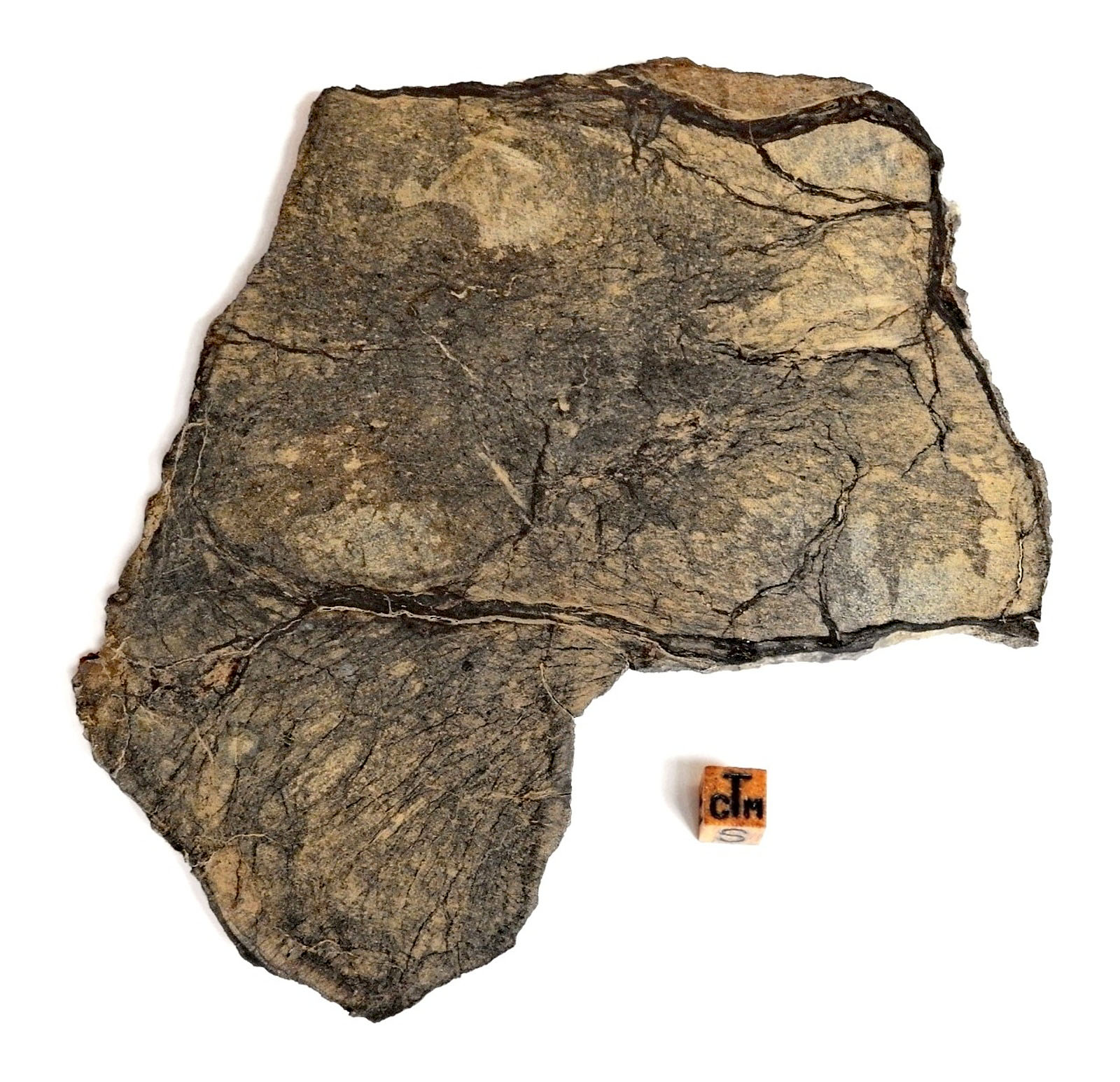|
Roll Overs:
#1
#2
#3
#4
#5
|

|
|
Copyright (c) Steve Brittenham.
|
EL-melt rock
TKW 100 kg. Fall not observed. Found August 2005, Algerian desert.
  
Steve writes:
NWA 2965 is one of a group of more than 20 paired and highly weathered enstatite chondrites. The first pieces were surface finds in 2004 and exhibit significant terrestrial alteration. Most are very dark and fractured, with interior colors ranging from brown to chocolate. Darker goethite-rich veins are cracks that acted as channels where iron leached from the interior of the stone at a time before the Sahara Desert became arid (Photo 1 is an example of this surface material).
Later, larger and less weathered pieces were found buried beneath a saline playa. Some exhibit bluish-gray areas that better represent the meteorite’s original enstatite (Photo 2 is an example of a subterranean find; Photo 3 shows a blowup of terrestrial sedimentary sands sometimes found in the deepest fissures). Carbon 14 analysis of this material helped establish a fall date of around 23,000 years ago.
Chondrules are uncommon but usually well-formed (Photo 4 shows one beside another sand-filled fissure on the other end of Photo 2’s slice). Their rarity, and the large variation in pieces depending on where they were found and how much material was terrestrially altered, complicated initial pairings and resulted in such classifications as EL6/7 chondrite, E chondrite, and even aubrite (photo 5 shows a slice of Al Haggounia 001 – an example of the latter now known to be paired with NWA 2965); today, however, a highly unequilibrated anomalous EL3 chondrite classification is generally recommended.
The large amounts of secondary minerals that formed around pieces of these meteorites, combined with significant terrestrial modification and replacement, earned them the name “relict”, “fossil”, or “paleo” meteorites. For those of us that also collect fossils, this makes a great “bridge” between hobbies!
Click to view larger photos #1 #2 #3 #4 #5
|
| |
Paul Swartz
10/16/2020 7:02:06 PM |
Oops. I mistook it as one of another set of pictures. Sorry. |
Steve Brittenham
10/16/2020 1:34:33 PM |
Hi Ken. I just checked the email I sent Paul, and it was in there. So Paul, let me know if it didn't come through for some reason and I can resend it. |
Kenneth Regelman
10/16/2020 11:54:32 AM |
Beautiful slice ! but where is Photo 5 ? |
Bernd Pauli
10/16/2020 7:31:15 AM |
I whole-heartedly agree with J.D. There are 6 NWA 2965 pieces + 1 NWA 2828 specimen in my collection! |
John Divelbiss
10/16/2020 7:05:17 AM |
Love this meteorite even though it is plentiful and thought of as mostly junk to many. But to me it is has been long underrated for its' "collectability". Some of the fresher material with notable metal flakes that I have of this EL Melt were sold to me as crappy NWA's in and around 2000-2002. This MPOD is a nice big slice. |
| |
|